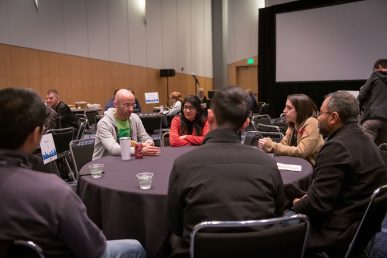Transforming a team to work on open source software is a complex task. Not particularly because of licensing or knowing the underlying technology a given community is using, but due to social and cultural barriers that can be difficult to overcome if everyone in the team is new to this environment. That’s why you need to plan for upstream, first.
Why isn’t it enough to send people to training courses and provide them the necessary time and tools for the work?
The challenge that your developers are facing is similar to when you hire a new team member who needs to learn how to be part of this new group. In an open-source community like OpenStack, the size of the core teams can be similar to proprietary environments, but when someone expresses their thoughts and ideas, thousands of people outside the company will see it and can react to it. This can easily scare people from participating in open discussions, sending mails to mailing lists or uploading new code or a documentation snippet for review.
How can hiring experts help your teams and organization?
Having mentors on your teams is one of the best ways to help people new to OpenStack take their first steps in a supervised way. The best mentors will be people who are already experienced with the tools and social norms of the community. You can also be sure that these experts know the underlying technology as well, since they are already trusted and respected members of OpenStack.
By knowing the pace and the people, they will be able to help not just the work the teams are doing, but with planning and business strategy too. They can better predict what to expect in an upcoming release, how fast the development of a feature is going, where to invest more time and effort and what to do another way. All in all, it’s a great boost to your organization from people who know best!
These OpenStack veterans will also be able to influence the community better with the visibility they already have. They can use their insights to coach and mentor the people who need to work upstream to give them a better community experience, help them engage the best way to get the most out of their open-source efforts. They can review ideas before introducing them to people to ensure they are clear and understandable, giving a vital once-over from someone who knows what the community looks for.
By knowing the dynamics of the community better, they can also help your team to introduce features at the right time and help them understand the processes, timing and right way to plan downstream.
What else they can help with?
If you haven’t heard about InnerSource, now is the time to get familiar with the concept. It’s a strategic effort to take what you’ve learned about open-source software development and consider using it as part of your proprietary software development flow. You can experiment how to make your tools and processes more efficient while giving your team and organization an easier way and better environment to contribute their changes and ideas upstream.
Having experts embedded in your organization can help you find the starting points for all the transformational steps above. They have the knowledge by participating and working upstream in OpenStack already, they have the internal view and deep understanding of this lively ecosystem which will benefit your business and development efforts.
When you plan your headcount for the year be strategic, look for expertise and experience to jump-start your OpenStack efforts! You can post your open positions on the following web site: https://www.openstack.org/community/jobs/
Some final reminders about why it makes sense to hire upstream first:
Have experts join your team
They are:
- experienced with the technology and the community as well
- able to predict better what’s next by the experience of seeing/experiencing the past
- have contacts and visibility
- able to teach/coach your team (embedded/internal mentors can be more available to you than outside/volunteer mentors)
- able to help out with your upstream processes
Keep the Inner Source in mind
- Consider using processes and technologies that are present in open source
- Aiming for efficiency, better and faster integration
- Having experts on board can help with revolutionizing your internal ways of working to improve
- Cloud Platform Monitoring, Digital Twins and a Real-time Context Broker - August 2, 2023
- StarlingX is 5 Years Old, and more from the OpenInfra Summit - July 11, 2023
- StarlingX is Turning 5! - June 13, 2023

)










